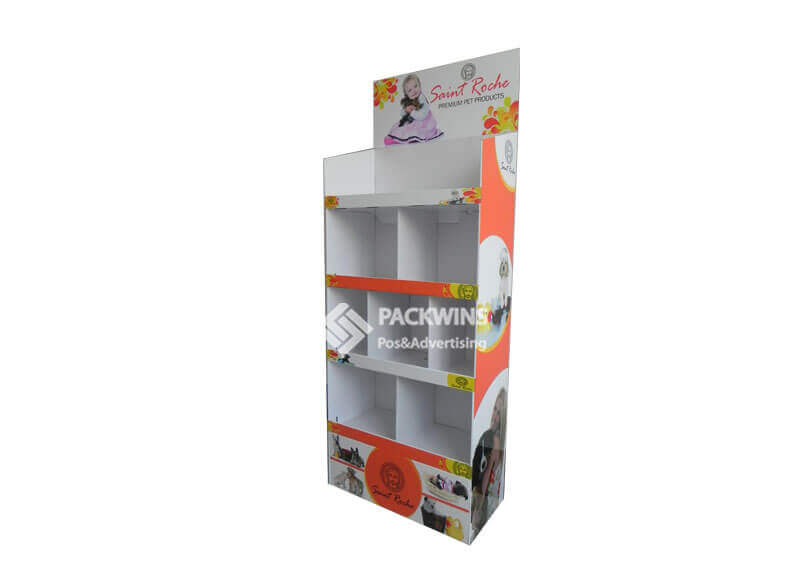Launching a cardboard display campaign is an exciting opportunity to showcase your brand, boost sales, and engage with customers in a unique and impactful way. But before diving into the design and production stages, it’s essential to answer a few key questions to ensure your campaign’s success. A cardboard display campaign, if executed correctly, can elevate your in-store marketing efforts and leave a lasting impression on consumers.
Before you move forward, here are four critical questions you need to answer to make sure your cardboard display campaign hits the mark.
1. What is the Goal of Your Cardboard Display?
The first and most important question to consider is: What is the primary goal of your display campaign?
Do you want to promote a new product, boost sales during a seasonal promotion, or highlight a specific brand message? Understanding the goal of your campaign will guide everything from the design to the placement of your cardboard display.
For example:
- If you’re introducing a new product, your display might need to focus on clear messaging and highlighting product benefits.
- For seasonal promotions, you may want a display that embodies the time of year or creates a sense of urgency with a limited-time offer.
- If brand awareness is the goal, your display should reflect the core values and aesthetics of your brand, with a focus on creating a memorable experience for customers.
By identifying the goal early on, you’ll be able to tailor the design, messaging, and functionality of your cardboard display to meet your needs.
2. Who is Your Target Audience?
Next, it’s crucial to understand who you are targeting with your cardboard display campaign. Different demographics respond to different types of messaging, design, and product offerings. For example, a display meant for teenagers may need a bold, energetic design with interactive elements, while a display targeting older adults might require a simpler, more elegant approach.
Ask yourself:
- What are the preferences, habits, and needs of your target audience?
- What kind of visual language, colors, and materials will appeal to them?
- Do they respond better to digital interactivity, or do they appreciate tactile and hands-on experiences?
Knowing your target audience helps you design a display that resonates with them emotionally, making them more likely to engage with your product and brand.
3. Where Will Your Cardboard Display Be Placed?
The placement of your display plays a significant role in how effective it will be. Where will your display be positioned in the store? Near the entrance, along the aisles, by the checkout counter? Or, will it be used as a window display?
Think about the following:
- Traffic flow: Where are customers likely to see the display? Choose high-traffic areas to maximize visibility.
- Store layout: How will the design fit within the store’s space? A well-placed display can enhance the overall shopping experience, while a poorly placed one can be overlooked.
- Lighting and positioning: Natural light or spotlights can significantly affect how your cardboard display looks. Ensure it’s positioned where lighting enhances its visibility.
Understanding the placement will help you decide on the size, shape, and design of the display to ensure it stands out and draws attention in the right way.
4. How Will You Measure the Success of the Campaign?
Before your campaign even begins, it’s essential to set clear metrics for success. How will you measure the effectiveness of your cardboard display campaign?
Some potential metrics include:
- Sales Increase: Did the display contribute to an increase in sales or product purchases?
- Customer Engagement: Were customers interacting with the display, scanning QR codes, or participating in any promotions?
- Brand Awareness: Did the campaign help elevate your brand’s visibility or recognition in-store?
- Customer Feedback: Were shoppers drawn to the display, and did they comment positively on it?
Setting specific goals and tracking them will help you assess whether the campaign met your objectives and what could be improved for future campaigns.
Conclusion
Creating a successful cardboard display campaign involves more than just designing an eye-catching piece. By answering these four questions—defining your goals, understanding your target audience, choosing the right placement, and measuring success—you can ensure that your cardboard display resonates with customers and achieves the desired results.
Remember, a cardboard display isn’t just about showcasing products; it’s about creating an experience that aligns with your brand, engages shoppers, and drives sales. Take the time to plan and strategize your campaign, and you’ll be on your way to retail success!




